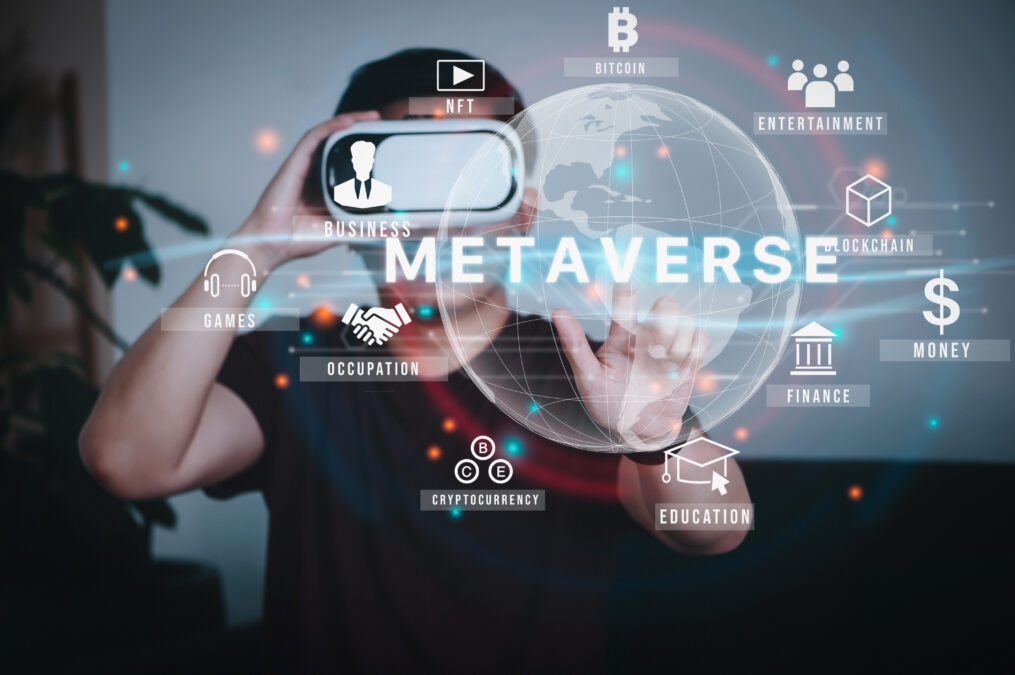Here’s how regulation of the metaverse could play out for organisations looking to leverage the infrastructure
Facebook’s rebrand as Meta may have been the most public show of support for the metaverse, but the tech giant isn’t alone. Across virtual world and Web3 platforms, serious metaverse plays are being made by companies hoping to secure a slice of a pie still in its relative infancy. Whether it’s the immersive worlds of Roblox and Minecraft or brands pursuing tokenisation efforts, it’s growing clear the metaverse is more than a passing fad, with investment only set to grow as adoption widens.
With more and more individuals and businesses looking to develop the newest ideas in the space, regulation is already scrambling to keep pace. As metaversal platforms become more mainstream and accessible, rules must be established to protect users without compromising their benefits.
Like the challenges faced by platforms now, a complex balance must be struck, one which will likely be the subject of debate for years to come. There won’t be a one-size-fits-all approach, as countries trying to regulate cryptocurrencies have come to realise, and it’s worth casting our minds forward to think about what a regulated metaverse may look like.
See also: The industrial metaverse: converging physical, connectivity and immersion
Shared three-dimensional spaces
Currently, the most popular shared world platforms that are deemed metaversal are games, which are largely based on traditional Web 2.0 infrastructure. They’re centralised, and generally not interoperable. Take Fortnite, Minecraft, or Roblox, for example, with a combined 100 million daily users. In comparison, the most popular social shared world platforms, like Zepeto, IMVU, Second Life and Altspace, account for around 40 million monthly active users.
The main regulatory challenges faced by these platforms resemble those faced by social platforms: privacy and moderation. There are also more unique challenges, like ensuring people feel safe by stopping others getting too close.
As platforms and Mixed and Virtual Reality (MR and VR) hardware become larger parts of our lives, the locking down and defaults of software choices imposed by hardware makers will undoubtedly face scrutiny. Take Meta’s Quest lineup of VR headsets which – much like Apple and Google’s hardware – has the tech giant’s offerings and ecosystem embedded into it through avatars, accounts, a browser and more. This is impactful, because instead of experiences on devices being ones we can enter and leave, those on a pair of mixed reality glasses could soon become regular parts of our lives.
As we approach tech that will merge the virtual and physical, whoever owns the operating system that powers it could overlay whatever they want onto the world around us. More in-depth data about us, our behaviours and surroundings could be collected and – in some cases – be required for the tech to work.
That’s not to say people will tolerate smart glasses that spew ads across every wall, but it’s fair to imagine the monetised experiences we have on our tech now, all around us. Imagine recipes or product ads overlaid onto your fridge, or branded avatars appearing in the real world. Regulation that deals with to what extent, and how, virtual experiences impact the real world may be inevitable.
Web3 and tokenisation
The regulatory challenges faced by Web3 are currently much fresher, arguably more nuanced and in some cases, urgent. It cannot be regulated as a single entity, as its multitude of use cases demand a multitude of approaches. Specific rules governing the security and availability of systems, finance, archives, identity and IP rights will need to be set.
The good news is that policymakers could leverage Web3’s benefits to impose regulation. As it’s based on decentralisation and automation, it’s not far-fetched to imagine the technology being used to enforce and automate taxation, for example.
Currently, Web3 platforms like cryptocurrency exchanges or NFT marketplaces aren’t standardised, with inconsistent UX and language used to communicate concepts. Often, these platforms have little or no duty to educate about safety or establish protections, and while platforms like Coinbase and OpenSea do a good job here, it’s far from the norm and scams are still commonplace owing to lack of understanding.
Then comes the question of aligning national privacy laws with global blockchains. Is it a matter of regulating chains as single entities, or should rules be dictated by where users access them from? Data permanence is one of the advantages of blockchains, but it raises concerns over how much control people have over the information stored about them.
Similarly, rules governing IP ownership must be established. A common misconception is that owning an NFT that represents art means owning the IP – this is rarely the case. Artists typically retain and store their work traditionally, with tokens on the blockchain merely linking to their pieces, meaning many NFTs are more like prints. Smart contracts can include IP arrangements, however creators, brands and legal systems (and automated IP protection) are yet to grasp the medium.
Some platforms are facilitating Custodial Wallets, which involve centralised bodies looking after crypto wallets on behalf of users who can then use more traditional verification methods. While this alleviates some safety and security concerns and lowers the barrier to entry to Web3 experiences, it comes at the cost of the liberalisation and privacy they are supposed to deliver.
See also: Using blockchain to grow your start-up
Big tech
The role of big tech firms will be interesting to monitor, as they will spearhead the growth of the early metaverse. Like Meta has shown, only the biggest players can afford to subsidise their big metaverse plays through existing offerings.
Their stiffest competition will come from decentralised platforms and their infrastructure. We’ve already heard Instagram CEO, Adam Mosseri, talk about leveraging Web3 to share creator content and audience data, an early indication that big tech may be forced to work with – not against – decentralised partners to achieve their visions for the metaverse.
Time will tell how embedded the metaverse will become in our lives, but it’s clear that it will influence the way we interact, work and live in some way or another. What works today may no longer be appropriate in a year’s time – perhaps less – and regulators will need to be nimble to stay ahead.
Jonothan Hunt is senior creative technologist at Wunderman Thompson Technology
Related:
How the Digital Markets Act will challenge big tech anti-competition — The new Digital Markets Act in Europe is set to challenge the dominance and anti-competition practices of big tech monopolies.
Accommodating the influx of data in the metaverse — Exploring how metaverse stakeholders can accommodate the pending influx of data to drive value.







